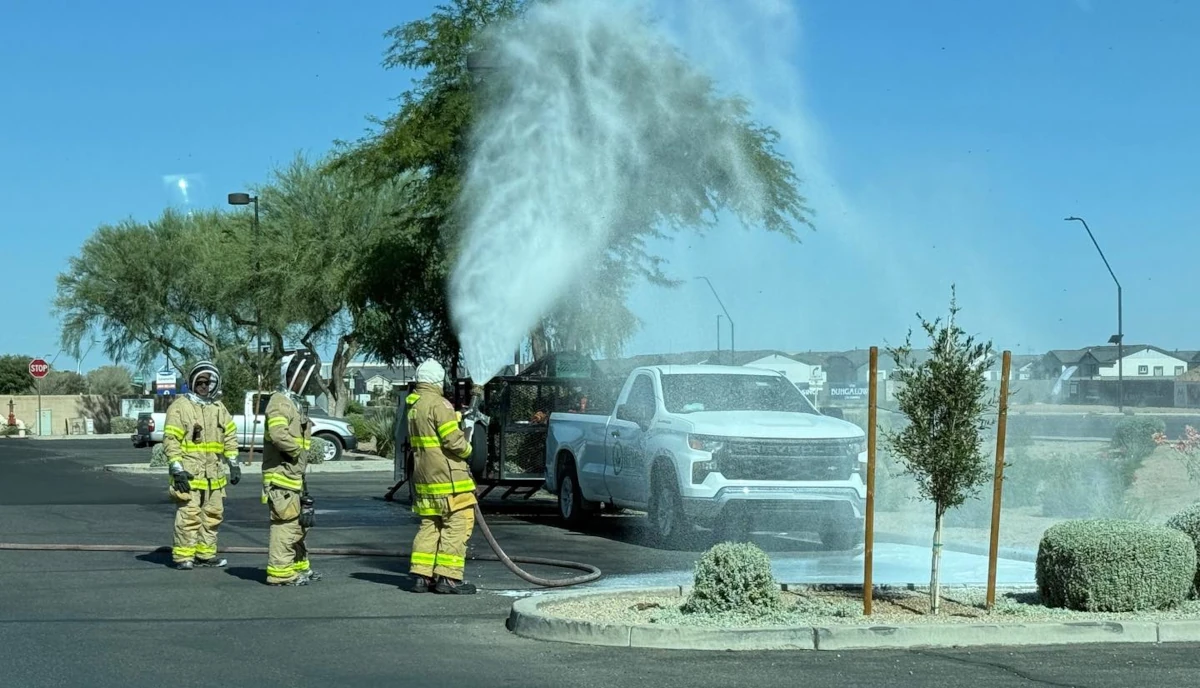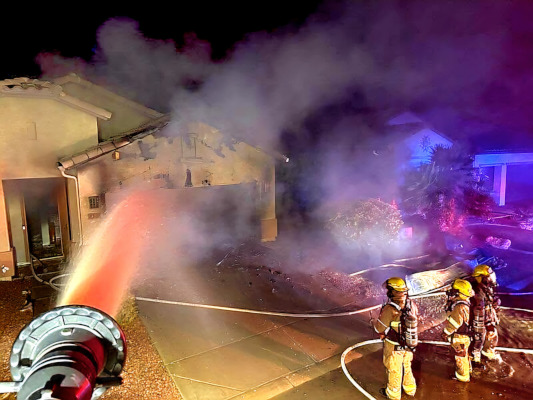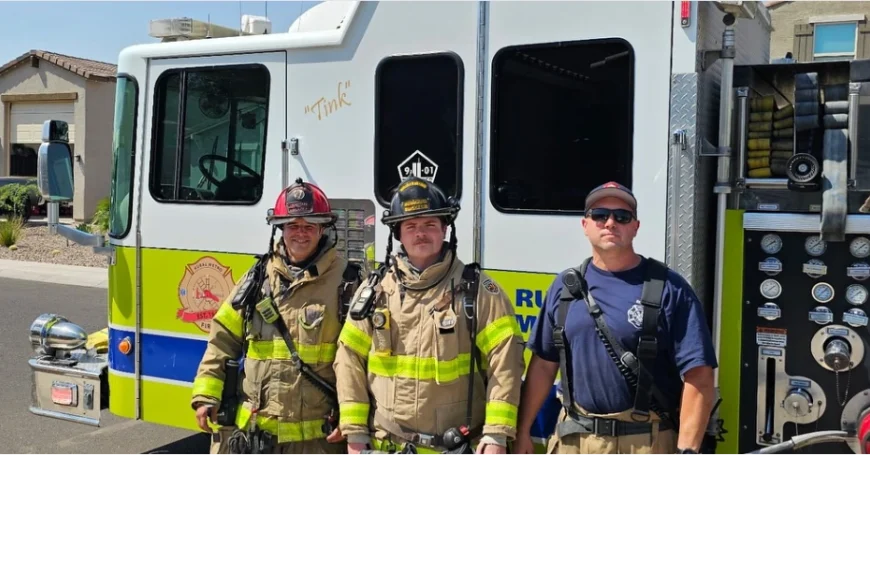Rural Metro fire crews responded to reports of an aggressive bee swarm attacking residents in San Tan Valley this morning. The Engine 842 crew was forced to suppress the bees with foam to ensure public safety, though officials noted they prefer to avoid such measures when possible.
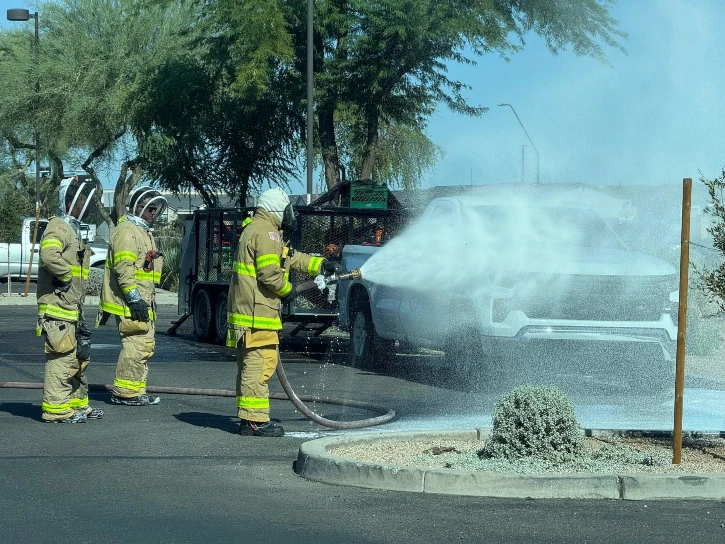
No major injuries were reported from the incident. Rural Metro officials remind residents that if attacked by bees, the best response is to seek immediate shelter indoors—whether in a home, car, or building. If shelter isn’t available, they advise running away from the swarm and continuing until safe, noting that hiding underwater is not recommended.
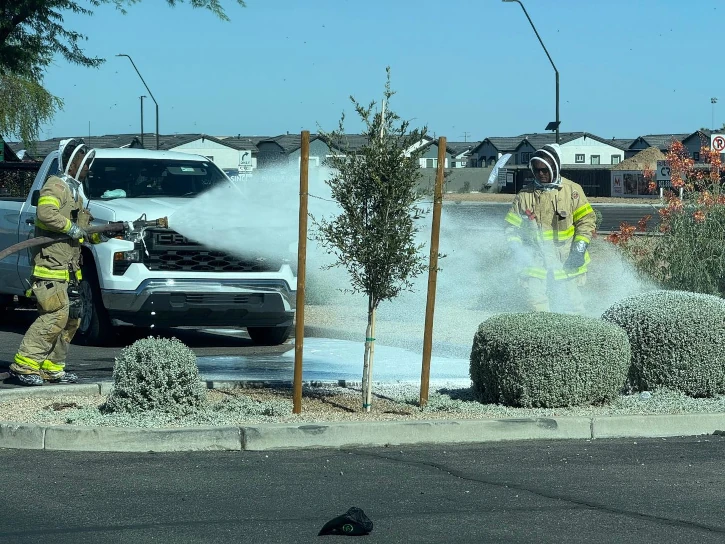
Residents who spot large bee swarms on their property are urged to contact bee specialists or pest control services immediately rather than attempting to handle the situation themselves.
Bee Safety Tips During Peak Activity Season
With bee activity at its height, Rural Metro offers these safety guidelines:
- Avoid disturbing a hive or swarm. Most attacks happen after some kind of agitation. Agitation may be intentional or unintentional such as mowing, loud noises, or accidentally disrupting a hive.
- Call a bee specialist or pest control company if you observe a large swarm of bees on your property and are concerned for your safety.
- If the bees are aggressive and begin to attack humans or animals, get inside. Bring pets inside and alert others to the presence of bees. If the swarm remains and the conditions are still hazardous to you or others, call 911!
- GET INDOORS- get in a car, inside your house, a tent, just isolate yourself from the bees. Find a cooler and darker location as that may confuse the bees. Then you should be able to swat any bees that entered with you.
- If you are being attacked and can’t get indoors. Run as far away from the swarm or hive as possible. Run through trees and bushes, which can help knock bees off of you and prevent them from easily attacking you. Africanized honey bees have been know to follow someone for upto a 1/4 mile.
- NEVER TRY TO HIDE UNDER WATER! Bees will wait for you to come up for air.
- Use clothing, a towel, or something else to shield your head and face. But, be able to move or run away. So keep vision as unobstructed as possible.
- If you have been stung more than 15 times, you are having symptoms other than local pain and swelling, or you are allergic to bee stings, call 911 immediately!
